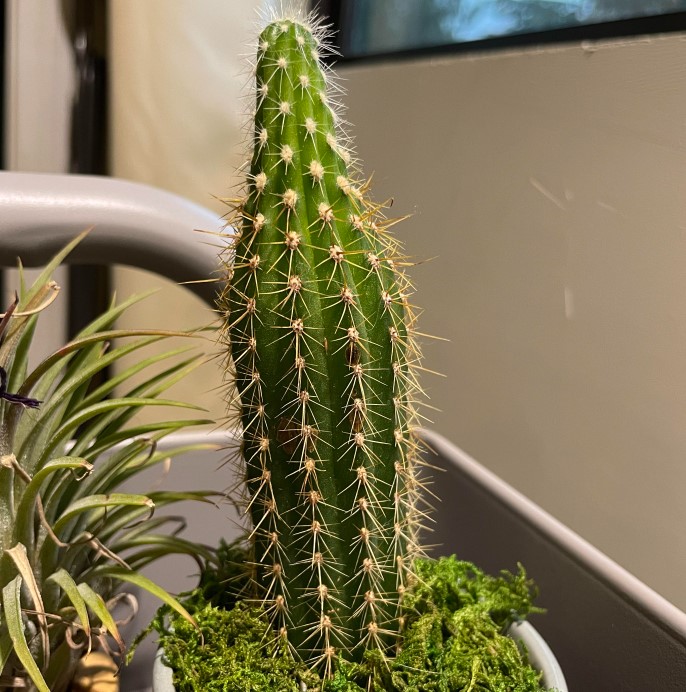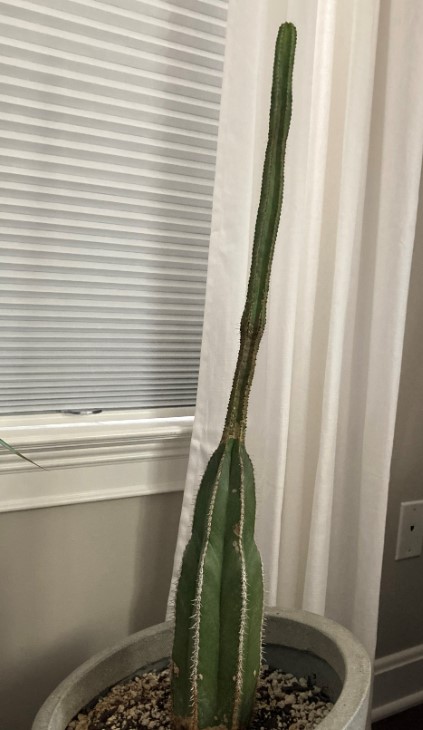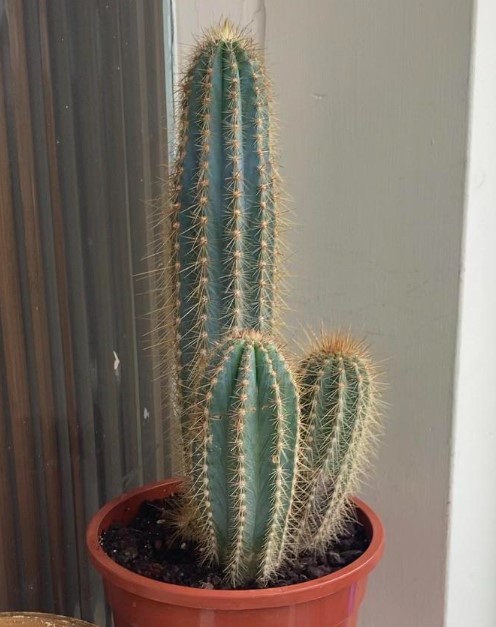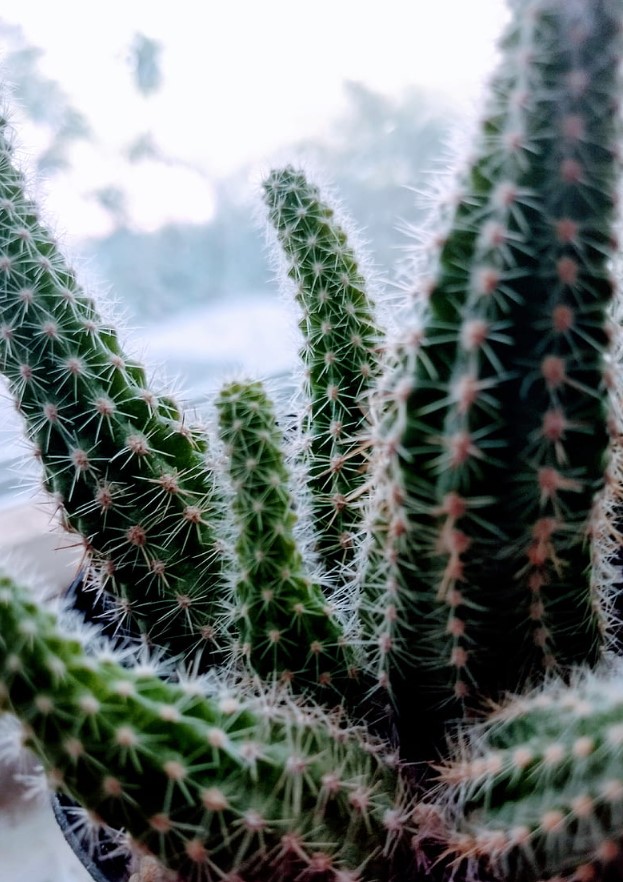If you are a man who likes cactus, you know the feeling you get watching them grow strong. But sometimes even with trying hard, the cacti can have problems growing right. One problem cacti get is needing more sun, making them too tall and weak looking. This is called etiolation.
Cacti get it for different reasons and it leads to extra long stems and pale, thin growth. Here we will look at what causes cactus etiolation, how to see it happen and what to do so your plants stay sturdy and colorful to look at. For any people who want cacti that are healthy and beautiful, these things on etiolation matter.
Key Takeaways:
- Cactus etiolation is a common problem that makes the stems too long and the plants grow weak.
- The first thing is knowing what causes etiolation, like not enough real sunlight or bad lighting, so you can fix it.
- Best way is preventing etiolation by giving the cacti what they need, like good light, care, and air, so it don’t happen.
- If a cactus has etiolation, you cut the stems back or change how it’s growing to look right again.
- Indoor cacti especially need things like enough sun from a window or lights and feed to stay stocky and not thin out looking pale.

Importance of Proper Lighting for Cacti
Cacti do best with enough real sunlight. Not having the right light can make them get too tall and thin out of shape. Sun is key for cacti to grow good, as it allows the process that gives them food through their skin.
Getting natural light is big for cacti inside houses, since windows don’t always give them what they need, which can cause the problem of getting too tall and skinny.
| Types of Light | Effect on Cacti Growth |
|---|---|
| Natural Sunlight | Direct or partial sunlight is the best option for cacti growth as it stimulates photosynthesis and optimal growth. Make sure to adjust the plants so they receive an equal amount of sunlight on all sides. |
| Fluorescent Grow Lights | Inadequate for optimal cacti growth. Cacti require light with wavelengths found in natural sunlight. However, fluorescent lights are ideal as supplemental lighting in areas with low natural light levels. |
| Incandescent Grow Lights | Not recommended for cacti growth due to high heat output and inability to provide sufficient light. |
It’s also smart to say cacti can burn easy if they get too much sun all at once. So keeping an eye on how much light they’re getting helps make sure they stay healthy.
To keep the cacti from getting too long and skinny, be sure they get plenty of good light and take care with things like air and wet soil. If a cactus has really gone long, sometimes cutting parts off is needed to make it look right again.

Factors Affecting Cactus Growth
Light is important for a healthy cactus, as said before. Other things can affect how the cactus grows, like water, food, and how it makes its own food.
A cactus needs the right amount of sunlight. Too little sun is bad. It makes the cactus tall and thin. This is called etiolation. The cactus stretches for the light. It does not get thick and strong.
Water is another thing. Too much water can drown the cactus. Not enough and it will dry out. The soil must be well-draining so water does not sit. Good fertilizer gives nutrients in the ground for growth.
The cactus also makes its own food through photosynthesis. It uses sunlight, carbon dioxide, and water to produce energy and oxygen. Photosynthesis needs the right conditions to work best. The light, water, and food all come together for healthy cactus development.
Proper care of these factors leads to a content cactus. It will stay short and stout as nature intended. Etiolation is avoided. The shining sun, wet earth, and nourished roots nourish a thriving cactus. Understanding lighting and other demands maintains a sturdy specimen.
Water
Cactuses need minerals and vitamins like other plants. But they don’t need as many. A cactus fertilizer works well once or twice a year. This gives them what they need without giving too much.
The cactuses will grow strong with just a little help. Too much food makes them sick just like people. The special fertilizer has just the right stuff for the spiny plants to stay green. A person does not want to poison the cactus with extra minerals and nutrients. Less is more where cactuses are concerned.
A light touch is best when it comes to their diet.

Photosynthesis
| Lack of Light | Etiolated Succulents |
|---|---|
| Cacti that do not get enough sunlight can become etiolated. | Etiolated succulents have a stretched-out appearance and weakened structure. |
| Insufficient light can also impact a cactus’s ability to photosynthesize, leading to slower growth. | Etiolated cacti may have smaller thorns or spines, as the plant has focused more on elongating than developing defensive structures. |
Therefore, it is crucial to provide enough light to prevent etiolation and ensure proper photosynthesis.
It’s essential to understand these various factors affecting cactus growth to provide proper care and create optimal growing conditions for healthy cacti.

Signs and Symptoms of Etiolated Cacti
Identifying etiolated cacti is crucial in preventing further growth issues. Here are a few common signs and symptoms to look out for:
| Sign/Symptom | Description |
|---|---|
| Stem elongation | Stems grow longer and thinner in search of sunlight, losing their natural shape and becoming weak. |
| Leaf stretching | Leaves grow increasingly farther apart from each other, losing the plant’s characteristic shape and density. |
| Black spots on plant’s surface | Black spots appear due to the plant’s inability to process nutrients properly, further weakening the cactus. |
These symptoms are all caused by a lack of sunlight and can be prevented by ensuring adequate light exposure and proper care for your cacti.
Preventing and Treating Cactus Etiolation
Caring for a cactus right stops it from getting long and lanky. Light is important – put the cactus where it gets enough sun, around 6 to 8 hours like a workday. If no good sun, use a light.
The cactus needs air like people, too. Don’t shut it in stuffy places with no breeze. A little wind keeps it happy.
Learn how your cactus wants to look. Don’t prune it wrong or force a shape. Let it grow natural – each cactus has its own way. Accept the cactus for what it is. With the proper care and a relaxed attitude, the cactus will stay healthy in its true form.

Addressing Etiolation in Indoor Cacti
An indoor cactus doesn’t want sunbeams smacking it all day like its outdoor friends. Put it on the windowsill where it gets a filtered glow, not the full force of the sun.
When natural daylight won’t cut it, use those grow lights some people got – but give space between the light and plant. Eight hours is good. Watch regular bulbs though, they can get too hot for a cactus’ taste. Just a warm glow is all it takes from the grow lights to keep it happy where the natural sun don’t reach so strong.
Soil
| Grow Light Type | Light Spectrum | Pros | Cons |
|---|---|---|---|
| Fluorescent Tube | Cool White | – Affordable – Suitable for small spaces | – Less efficient than other types – Limited light range |
| LED | Full Spectrum | – Energy-efficient – Long-lasting – Customizable light spectrum | – Expensive upfront cost – Some models may not provide sufficient light |
| High-Intensity Discharge (HID) | Metal Halide (vegetative) and High-Pressure Sodium (flowering) | – Powerful – Suitable for large areas | – High heat output – Expensive to run |
Using grow lights can help your indoor cacti receive sufficient light, even in dark rooms. There are various types of grow lights available, with each having its advantages and disadvantages. Select the right type of grow light based on the needs of your cacti and your personal preferences.
Fertilizer
Conclusion
Keeping cacti from growing too tall and lanky takes some care. This guide shows the triggers that make it happen and how to stay on top of light, water and food for happy plants.
But fact is each cactus also has its own mind. What works for one may not suit another. That’s why you gotta watch close and note what really gets your prickly pals growing true. Be ready to tweak things if they start looking wrong. A little changes like big changes, except sooner.
If you pay mind to your plants with what they need to stay perky, you can have succulents lasting years. But always remember – cacti will be cacti. With the right treatment when they act up, and care borne of understanding their nature, they’ll stay bright and growing right for seasons to come. This guide gave what you need, now get out there and give your spiny friends what they crave the most – good care with a kind hand.
